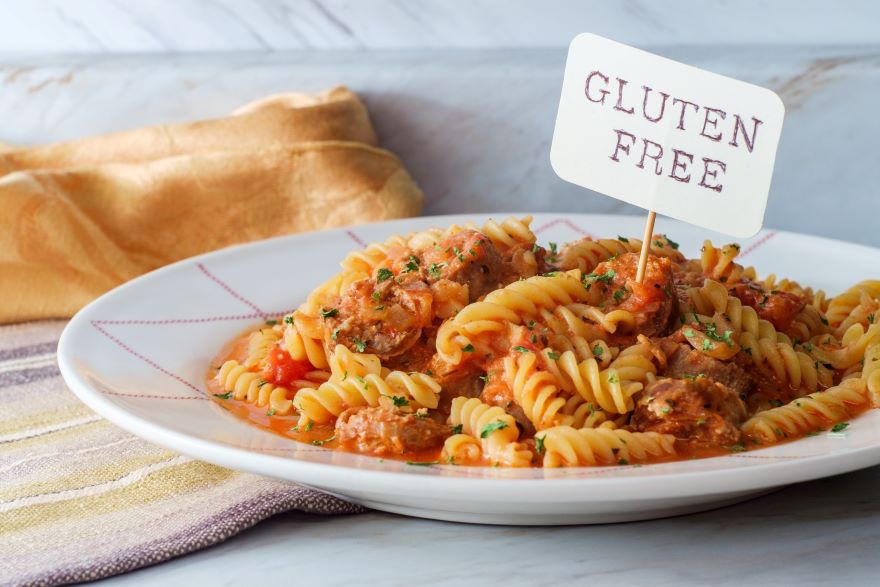I never thought I’d be the person preaching about gluten-free rotini, but here I am, completely transformed by these spiraled wonders. Let me take you on a journey that changed not just my diet, but my entire outlook on life.
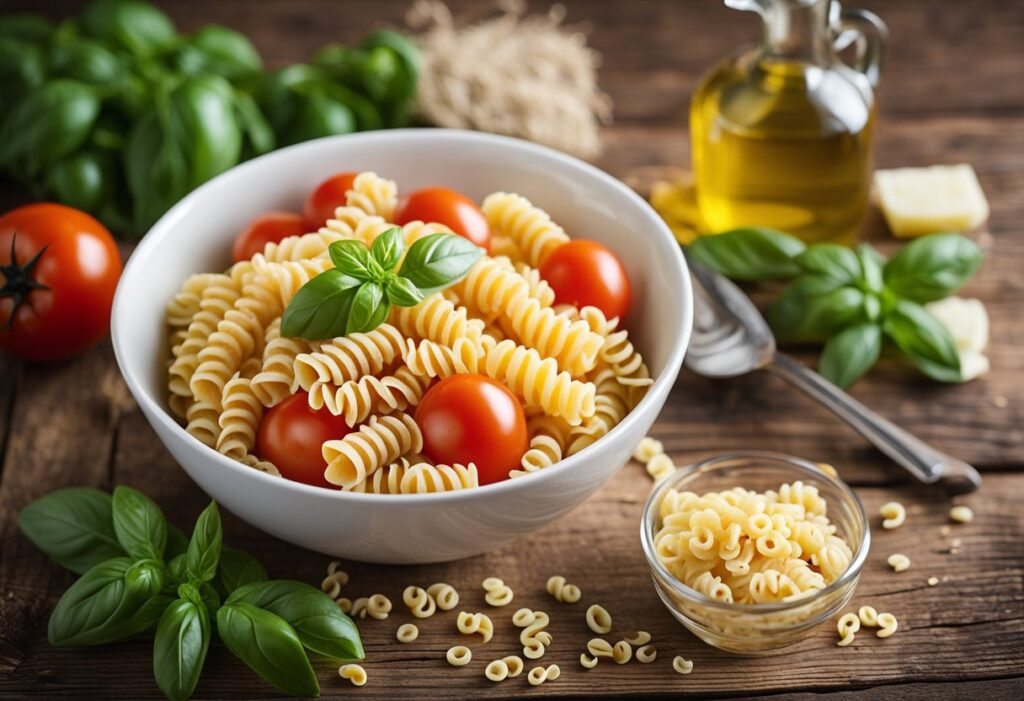
The Pasta Disaster That Changed Everything
Picture this: it’s a cozy Friday night, and I’m standing in my kitchen, surrounded by a mess of flour, eggs, and what was supposed to be homemade pasta dough. My first attempt at making “traditional” rotini had ended in disaster, and I was ready to throw in the towel before I’d even really begun.
But as I swept up the floury mess, wiping away what I thought were my shattered culinary dreams, my eyes landed on a forgotten package of gluten-free rotini sitting innocently on the shelf. Little did I know, those unassuming noodles were about to become the heroes of my story.
The Rotini Revelation
Growing up, pasta was a staple in our house. Sunday dinners were marked by mountains of spaghetti, fettuccine, and yes, rotini. But as I got older, those beloved noodles started to betray me. Bloating, discomfort, and a general feeling of sluggishness became my constant companions after every pasta meal.
With nothing left to lose (except maybe my dignity), I decided to give the gluten-free rotini a go. I reached for a package of Barilla Gluten Free Pasta, Rotini, a brand I trusted from my gluten-eating days.
I boiled the water, tossed in the noodles, and crossed my fingers. The result? A surprisingly delicious, perfectly al dente pasta that didn’t make me want to curl up in a food coma afterward. It was a small victory, but it felt monumental.
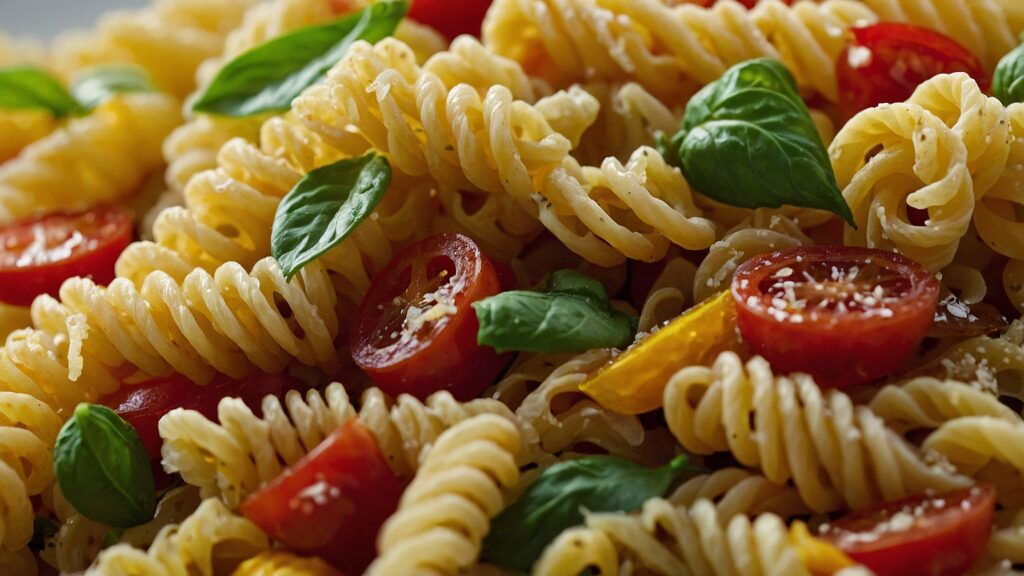
The Comfort Rotini: My First Success
That first successful gluten-free rotini dish became my go-to recipe, a comforting reminder that change is possible, even when it seems daunting. Here’s what went into my “Comfort Rotini”:
- 1 package of Barilla Gluten Free Pasta, Rotini
- 2 tablespoons olive oil
- 3 cloves of garlic, minced
- 1 pint cherry tomatoes, halved
- A handful of fresh basil, torn
- Salt and pepper to taste
- A sprinkle of nutritional yeast (my secret weapon for cheesy flavor without dairy)
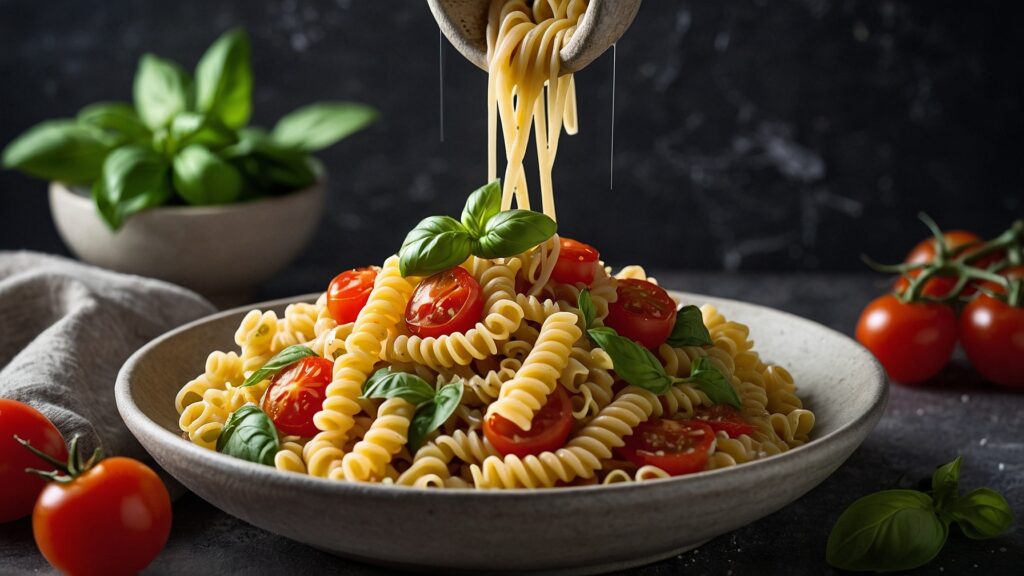
Cooking these simple ingredients created a meal that was more than the sum of its parts. It was satisfying, flavorful, and gave me a surprising energy boost. But more than that, it represented a small step towards better health – one that I had taken all by myself.
The first time I twirled these noodles around my fork, watching the sunset from my kitchen window, I felt a sense of accomplishment I hadn’t experienced in years. It wasn’t just about the pasta; it was about proving to myself that I could make positive changes in my life, one rotini at a time.
Overcoming the “It’s Just a Phase” Mindset
Of course, the journey wasn’t all smooth sailing (or should I say, smooth slurping?). After a few weeks of my newfound gluten-free rotini obsession, friends and family started giving me those looks. You know the ones – part concern, part amusement, all skepticism. “It’s just a phase,” they’d say, or “You’ll be back to regular pasta in no time.”
Those comments stung, I won’t lie. There were days when the siren call of my favorite Italian restaurant nearly drowned out the bubbling of my pasta pot. But each time I felt myself wavering, I’d remember how good I’d been feeling since starting my gluten-free journey. More energy, better digestion, even my skin was clearer. Was I really willing to give that up just because change made some people uncomfortable?
Instead of caving to the pressure, I decided to get creative. If people thought gluten-free rotini was boring, I’d show them just how wrong they were.
The Spicy Surprise: Rotini Meets Arrabbiata
My next rotini experiment was born out of a desire to spice things up – literally and figuratively. I’d read about the anti-inflammatory properties of garlic and chili peppers, and thought, “Why not combine them with my newfound love?” The result was a zippy, invigorating dish that became my secret weapon for impressing dinner guests:
- 1 package of Barilla Gluten Free Pasta, Rotini
- 2 tablespoons olive oil
- 4 cloves of garlic, minced
- 1 can of crushed tomatoes
- 1 teaspoon red chili flakes (or more if you’re brave!)
- 1 tablespoon tomato paste
- Fresh parsley, chopped
- Salt to taste
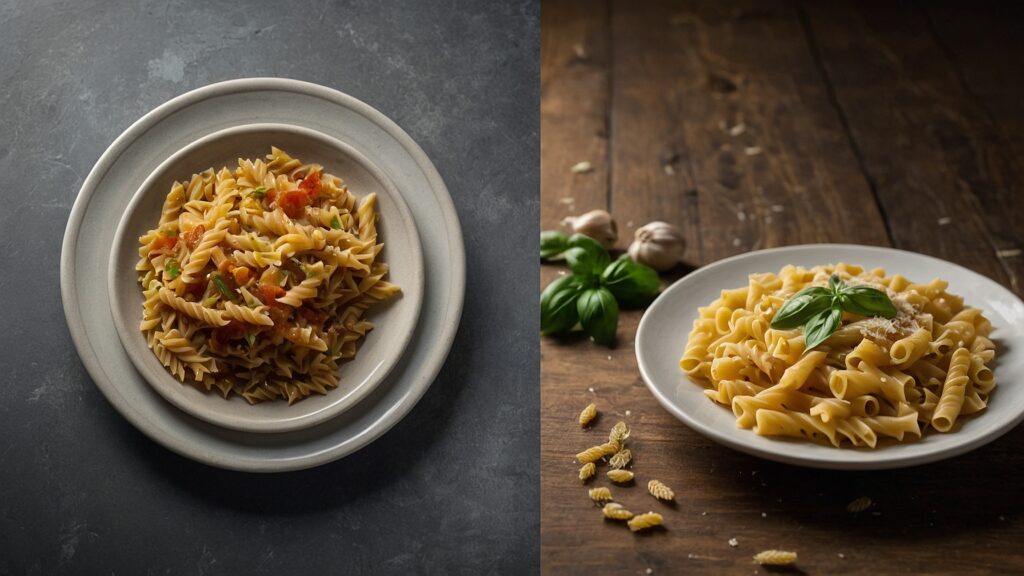
The first bite of this concoction was a revelation. The al dente rotini held up beautifully to the spicy sauce, creating a dish that was both satisfying and energizing. It felt like a wake-up call for my taste buds and my body.
I started bringing this rotini to potlucks, and soon, curious friends were asking for the recipe. Their surprised exclamations gluten-“free?”—were music to my ears. Slowly but surely, I was becoming the gluten-free guru of my social circle, a title I wore with pride.
The Summer Delight: Lemon Herb Rotini Salad
As my confidence grew, so did my willingness to experiment. One weekend, craving something light and fresh but not wanting to abandon my rotini commitment, I created what would become my favorite summer dish. This time, I decided to try a different type of gluten-free pasta – Banza Chickpea Pasta, Rotini.
This pasta, made from chickpeas, is packed with protein and fiber, making it a nutritional powerhouse.
Here’s the recipe for my Summer Delight Lemon Herb Rotini Salad:
- 1 package of Banza Chickpea Pasta, Rotini, cooked and cooled
- Juice and zest of 2 lemons
- 1/4 cup olive oil
- 1 cup cherry tomatoes, halved
- 1 cucumber, diced
- 1/4 cup red onion, finely chopped
- A handful each of fresh basil, parsley, and mint, chopped
- Salt and pepper to taste
- Crumbled feta cheese (optional)
This rotini salad was a game-changer. The bright lemon flavor complemented the herbs perfectly, while the cool cucumber added a refreshing crunch. The Banza pasta held up beautifully to the dressing, maintaining its texture even after sitting in the fridge. It was like tasting summer in a bowl, but with added health benefits!
I started making this salad for weekend barbecues with friends. Watching their skeptical expressions turn to delight as they tasted it was incredibly satisfying. Even my most die-hard gluten-loving buddy had to admit it was “pretty darn good.”
Growing My Own: The Herb Garden Adventure
As my rotini obsession grew, so did my curiosity about the ingredients I was using. I started researching the health benefits of different herbs, fascinated by their potential to elevate both the flavor and nutritional value of my dishes. This little exploration sparked an idea: what if I grew my own herbs?
Now, I should mention that my previous attempts at gardening had all ended in withered plants and disappointed sighs. But something about this felt different. Maybe it was the confidence I’d gained from my rotini successes, or maybe it was just the herb magic working its charm, but I decided to give it a go.
I started small, with a few herb plants in containers on my balcony. The day I saw the first tiny leaves sprouting, I felt like a proud parent. Watching those plants grow, tending to them daily, connected me to my food in a way I’d never experienced before.
From Garden to Plate: A Herbal Rotini Revolution
And the taste! The first rotini dish I made with my homegrown herbs was a revelation. It was fresher, more vibrant than anything I’d made before. Here’s the simple recipe I used to celebrate my gardening victory:
- 1 package of Barilla Gluten Free Pasta, Rotini
- 2 tablespoons olive oil
- A generous handful each of fresh basil, oregano, and thyme from my garden
- 2 cloves of garlic, minced
- A splash of lemon juice
- Salt and pepper to taste
- A sprinkle of pine nuts (optional)
To really elevate this dish, I decided to invest in a Vitamix 5200 Blender Professional-Grade. This powerhouse of a blender allowed me to create the smoothest, creamiest herb sauces you can imagine.
- Variable Speed Control: Easily adjust speed to achieve a variety of textures. The dial can be rotated at any point during the blend, so you’re in complete control
- Large Batches: The size and shape of the self-cleaning 64-ounce container is ideal for blending medium to large batches. Design Feature : Radial cooling fan and thermal protection system
- Hot Soup: The blades in the Vitamix container reach speeds fast enough to create friction heat, bringing cold ingredients to steaming hot in about six minutes
- Hardened Stainless-Steel Blades: Our aircraft-grade stainless steel blades are designed to handle the toughest ingredients, so from the first blend to the last, you get the same quality results
- Self-Cleaning: With a drop of dish soap and warm water, your Vitamix machine can clean itself in 30 to 60 seconds
I used the Vitamix to blend a portion of the herbs with olive oil, garlic, and a touch of lemon juice, creating a vibrant green sauce that coated every ridge of the rotini perfectly. The remaining herbs were roughly chopped and sprinkled on top for added texture and a burst of fresh flavor.
Twirling this rotini around my fork, made with herbs I’d grown myself and blended to perfection, was a moment of pure joy. It represented not just a tasty meal, but the culmination of a journey that had led me to a healthier, more mindful way of living.
The Ripple Effect: How Rotini Changed My Life
As I sit here, reflecting on my gluten-free rotini journey, I’m amazed at how much has changed. What started as a simple attempt to be a bit healthier has rippled out into all areas of my life:
- Energy Levels: Gone are the post-pasta slumps. My gluten-free rotini dishes, packed with nutrients and free from irritating gluten, keep me energized throughout the day.
- Digestive Health: The bloating and discomfort that used to plague me after meals? A thing of the past.
- Mindful Eating: Preparing my rotini dishes has become a mindful ritual, making me more aware of what I put into my body throughout the day.
- Creativity: Experimenting with rotini recipes has sparked creativity in other areas of my life, from cooking to problem-solving at work.
- Community: Sharing my gluten-free journey has connected me with like-minded individuals, both online and in my local community. I’ve even started a small gluten-free cooking club!
- Environmental Awareness: Growing my own herbs opened my eyes to the importance of sustainable food practices. I’m now more conscious of my environmental impact in all areas of life.

Your Turn: Embarking on Your Own Rotini Revolution
As I wrap up my story, I want to turn the spotlight on you, dear reader. Perhaps you’re where I was at the beginning – skeptical, unsure, maybe even a bit intimidated by the idea of change. Or maybe you’re already on your own health journey and looking for some fresh inspiration.
Wherever you are, I invite you to give gluten-free rotini a try. Start small – you don’t need to grow your own herbs or become a master chef overnight. Just pick up a package of gluten-free rotini on your next grocery run and experiment.
Remember, this journey isn’t about perfection. It’s about progress, curiosity, and being open to the possibilities that can come from something as simple as a gluten-free noodle.
So, what do you say? Are you ready to start your rotini revolution with me?
Here are a few questions to ponder as you begin:
- What’s one small step you can take today towards a healthier, gluten-free lifestyle?
- How might incorporating gluten-free rotini into your diet impact your daily life?
- What’s a health goal you’ve been putting off that you could revisit with a fresh perspective?
Remember, every big change starts with a small step. My journey began with a single package of gluten-free rotini and a willingness to try something new. Yours could start today.
Here’s to twirling, slurping, and savoring our way to better health! 🍝💪

*We may earn a commission for purchases made using our links. Please see our disclosure to learn more.

